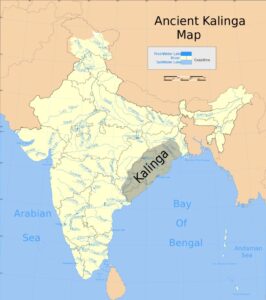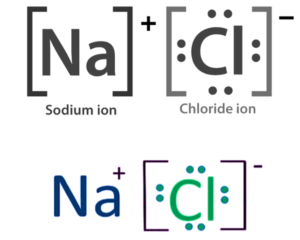Introduction
The Kalinga War is regarded as the bloodiest conflict ever waged. Emperor Ashoka, the most important leader of the Mauryan empire, engaged in the battle. He was the son of Mauryan Empire official Bindusara and the grandson of Chandragupta Maurya. Except for the Kalinga region, the Mauryan empire ruled over all of India. The feudal Nanda Empire reigned over the state of Kalinga. Emperor Ashoka launched an invasion of Kalinga to take control of the region after numerous failed efforts. Ashoka engaged in it as his first and final major engagement because of his growing disenchantment with the conflict’s aftermath.
Background and Causes of War
Chandragupta, Bindusara, and Ashoka were the three notable Mauryan emperors. The Mauryan Empire grew during Chandragupta Maurya’s reign, encompassing all of modern India. The Kalinga State, located on the East Coast close to the modern state of Odisha, was the sole sovereign state that could not be captured. The Nanda Empire previously dominated the state of Kalinga until 321 BCE. It achieved independence before the Mauryans took control. Despite numerous attempts by Chandragupta Maurya and Bindusara, the Mauryan Empire was unable to retake Kalinga. After various brutal battles between the brothers, Ashoka has been crowned Emperor and is determined to subjugate Kalinga.
There were many talented, serene, and competent people in the Kalinga state. With a strong navy and numerous ports for trade, the area was likewise prosperous and thriving. It was simpler for them to travel to Southeast Asia to establish economic relations because it was located on the East Coast. The Kalinga state is thought to have been viewed as a threat to the Maurya Empire since it had a good opportunity to obstruct communication between the Mauryan capital, Pataliputra, and the Central Indian region. The Bay of Bengal region, which the Mauryans viewed as another threat, was also brought under Kalinga’s rule. The Mauryans, who governed all of India except for Kalinga, saw it as a matter of political status as well.
Ashoka attempted to negotiate with the King of Kalinga, but he resisted giving up power. In the eighth year of his rule, Ashoka attacked Kalinga because he had no other choice. The Kalinga War ended in 261 BCE, while historians are unsure of when it began.

.
Main Battle/Events of the Battle
- Historians concur that the Dhauli Hills were the site of the start of the Kalinga War. The Daya river flows by the Dhauli hills. It is believed that the Daya river in modern-day Odisha, India, was filled with the blood of the massacre victims.
- A little over 100,000 people died, and Ashoka imprisoned 1,50,000 Kalinga warriors. With 60,000 footmen, 700 war-trained elephants, and 1000 cavalry, the Kalinga army was well-prepared.
- Compared to the Mauryan military, the Kalinga state’s military strength still seemed insufficient. The Mauryans had about 60,000 warriors, nearly 1700 war horses, and thousands of elephants prepared for battle.
- However, the state of Kalinga engaged in battle with the Mauryans and battled valiantly till the very end.
- Finally, the Mauryans defeated them with their formidable military might. The Mauryan kingdom was able to acquire Kalinga, fulfilling Ashoka’s ambition.
For more help, you can Refer to Lesson 7 – Ashoka, The Emperor in Social Studies Class 6. Checkout the video Lesson for a better understanding
Significance of the Kalinga War.
- Emperor Ashoka triumphed in the conflict handily, but he was unable to comprehend the carnage he saw. The loss of so many people and the destruction of so much property severely saddened Ashoka.
- He understood how his insatiable desire for power had rendered him so blind that he had continued to pillage and destroy Kalinga.
- There weren’t many people left in Kalinga to rule, despite his desire to do so. Ashoka was overcome with sorrow and guilt after seeing thousands of people killed and deported, as well as the suffering, bloodshed, and misfortune of the Kalinga.
- This experience forever altered his heart. He adopted Buddhism and vowed to pursue the Dhamma-Vijaya and Ahimsa (non-violence) paths (win people with Dhamma).
- This was Ashoka’s first and last significant conflict. The empire’s military growth was subsequently halted, and he instituted a new program of 40 years of rule based on love, peace, non-violence, and harmony.
- In his Edicts, Ashoka recorded his comments on the Kalinga War, saying that 1,50,000 civilians and warriors from both sides perished in the conflict. Additionally, he sculpted images of the Dhamma into the pillars and rocks. He dispatched adherents to various nations to spread the Dhamma and preach Buddhism to advance a non-violent way of life.
Summary
One of the bloodiest and most vicious conflicts in history, the Kalinga war will always be remembered. Emperor Ashoka vowed to invade and conquer Kalinga after numerous attempts to get the independent kingdom of Kalinga included in the vast Mauryan Empire failed. Despite having a powerful army of its own, Kalinga’s army was nothing in comparison to the Mauryan army. In a brutal struggle, the Mauryans subsequently defeated Kalinga. He was sorrowful and repentant after seeing Kalinga’s suffering and devastation. He then decided to spread Buddhism by adhering to the Dhamma and the path of non-violence.
Frequently Asked Questions (FAQs)
1. How did Ashoka come to Power?
Ans. According to popular belief, the ministers of the late monarch Bindusara picked his son Ashoka to succeed him as ruler of the Mauryan Empire. After gaining control, Ashoka killed one of his brothers by burning Susima alive in a pit of charcoal. It’s also thought that he put 99 of his brothers to death following that.
2. How many Edicts were Engraved by Ashoka? What was there in Ashoka’s Edicts?
Ans. Ashoka carved 33 edicts, which are still visible in modern-day India, Bangladesh, Pakistan, Afghanistan, and Nepal. In his Edicts, Ashoka outlined his insights, the motivation behind his conversion to Buddhism, the methods he used to spread Buddhism within and outside modern-day India, the moral and social perception of Buddhism, and his contributions to society and the welfare of animals.
3. How many Categories of Edicts can be Found?
Ans. Based on their sizes and their medium, Edicts could be divided into four main categories. Sizes might be major or minor, and a middle size can be either a Rock or a Pillar. The engraving of Minor Edicts came first, then Major ones. Similarly. Before Pillar inscriptions, there were inscriptions on rocks. As a result, there were four different types of edicts: minor rock edicts, minor pillar edicts, major rock edicts, and major pillar edicts.
4. What is Dhamma?
Ans. The Buddha’s teachings, known as Dhamma in Buddhism, discuss learning the skill of letting go of unhappiness and suffering, or dukkha. Buddha taught that enlightenment can be attained through adhering to the Dhamma. To achieve the desired outcome, daily practice is required.
Also Read :
